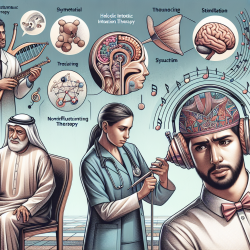The COVID-19 pandemic has revolutionized service delivery across various healthcare sectors, including speech-language pathology (SLP) and audiology. A recent study titled "Challenges in Delivering Tele-Practice Services for Communication Disorders Among Audiologists and Speech Language Pathologists" (Bhattarai, Sanghavi, & Abhishek, 2022) sheds light on the critical challenges faced by practitioners in this field. This blog will delve into the study's findings and offer data-driven strategies to enhance tele-practice outcomes.
Key Challenges in Tele-Practice
The study identifies three primary challenges in tele-practice:
- Difficulty Handling Pediatric Populations: 86.4% of participants reported that managing child language disorders, particularly in cases involving autism spectrum disorder (ASD) and attention deficit hyperactivity disorder (ADHD), was highly challenging.
- Lack of Evidence-Based Tele-Resources: Participants highlighted a significant shortage of standardized, evidence-based resources tailored for tele-practice, particularly within the Indian context.
- Insufficient Training: Only 16.1% of clinicians had received formal training in tele-practice, underscoring the need for structured educational programs.
Strategies for Improving Tele-Practice Outcomes
To address these challenges, practitioners can adopt the following strategies:
- Specialized Training Programs: Institutions should incorporate tele-practice modules into their curricula. Continuous professional development through workshops and online courses can also be beneficial.
- Developing Evidence-Based Resources: Collaborate with research institutions to create culturally and linguistically appropriate tele-resources. Utilizing platforms like Pinterest and Teachers Pay Teachers can provide interim solutions.
- Enhanced Caregiver Involvement: Training caregivers to assist during sessions can improve outcomes. Clear communication of therapy goals and regular feedback loops are essential.
Encouraging Further Research
Future research should focus on developing standardized tele-resources and evaluating their efficacy. Studies should also explore the long-term impacts of tele-practice on different patient demographics to ensure comprehensive service delivery.
For practitioners looking to delve deeper into the study, the original research paper can be accessed here: Challenges in Delivering Tele-Practice Services for Communication Disorders Among Audiologists and Speech Language Pathologists.










